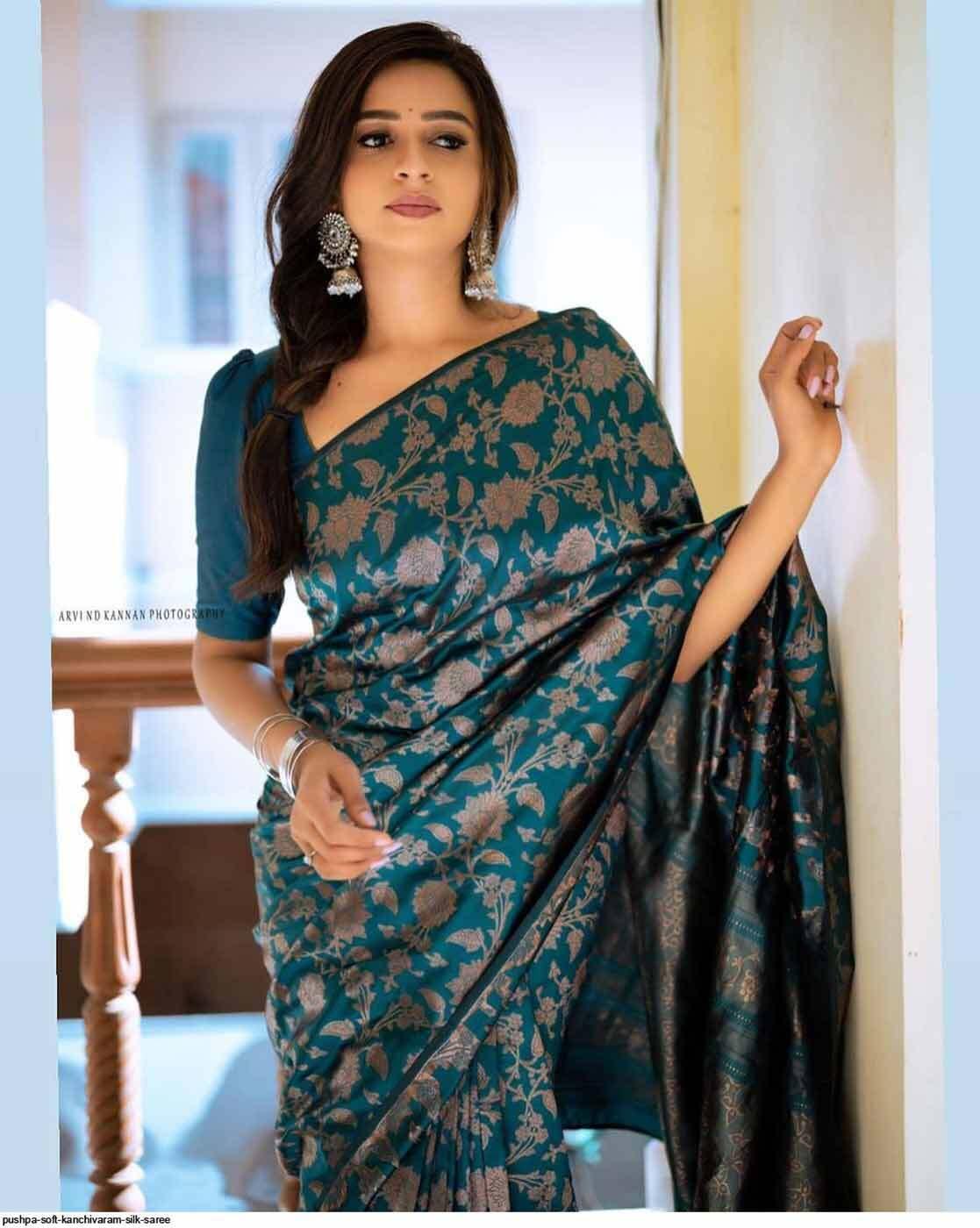Discovering the Tradition and Elegance of the Indian Saree

The Indian saree is a classic piece of clothing that perfectly captures the country's rich past, cultural variety, and ageless grace. The saree, worn by women all throughout the nation for generations, is more than simply a garment; it is a representation of grace, femininity, and tradition. We explore the importance, designs, and continuing allure of Indian sarees in this blog article as we dig into the fascinating world of these garments.
Cultural Significance: Representing Identity and Tradition
In India, the saree has a great deal of cultural importance and is closely linked to traditions, rituals, and regional identities. It is worn on significant days such as weddings, festivals, religious celebrations, and others. India's diverse and vibrant cultural past is reflected in the distinct saree draping techniques, textiles, and designs that are exclusive to each area.
Exquisite Fabrics: A Senses-Pleasing Exhibition
The various opulent textiles used to make Indian sarees each have a unique feel, drape, and visual appeal. Banarasi sarees are favoured for their lightweight comfort and breathability, especially those made of Chanderi cotton, Kota cotton, and Taant cotton. Kanjeevaram, and Tussar silk sarees are well known for their brilliant sheen and complex weaving designs. Other materials like georgette, chiffon, organza and crepe give the saree an elegant flow and delicate beauty.
Regional Draping Styles and Fashion: Celebrating Diversity
The variety of saree draping techniques used all throughout India are a lovely reflection of the country's rich cultural environment. The Gujarati drape, the Nauvari drape from Maharashtra, the Bengali drape from West Bengal, the Nivi drape from Andhra Pradesh, and the Bengali drape from Bengal are just a few examples of the numerous patterns that highlight the distinctiveness of each area. Every draping technique has a unique charm that highlights the saree's beauty in a special way.
Complex Designs and Embellishments: The Finest in Craftsmanship
Swarajshop sarees are known for their gorgeous patterns, dexterous needlework, and delicate decorations. A touch of wealth and grandeur is added by the zari technique, which includes weaving metallic threads into the fabric. Other adornments, such as sequins, stones, beads, and mirror work, produce a sparkling look and turn the saree into a work of art. Block prints, hand-painted saris, and complex threadwork are examples of Indian artists' talent and expertise.
From traditional to contemporary, enduring appeal
The Indian saree has endured and continues to enthral ladies of all ages despite the constantly shifting fashion scene. Its adaptability enables a smooth change from classic to modern appearances. Designers frequently reinvent the saree, keeping its essential qualities while adding contemporary shapes, unusual draping, and fusion elements. The saree's versatility guarantees that it will always be loved, admired, and relevant by women all over the world.
Conclusion:
The Indian saree is a particularly amazing piece of clothing since it brings together the strands of heritage, workmanship, and beauty. It is an enduring icon of Indian history due to its cultural significance, variety of draping methods, luxurious materials, and beautiful decorations. The Indian saree promotes femininity, elegance, and originality whether it is worn for auspicious events or as a fashion statement. Consequently, give in to the draw of the Indian saree and allow it to wrap you in a tapestry of custom, style, and timeless beauty.
- Questions and Answers
- Opinion
- Motivational and Inspiring Story
- Technology
- Live and Let live
- Focus
- Geopolitics
- Military-Arms/Equipment
- Sécurité
- Economy
- Beasts of Nations
- Machine Tools-The “Mother Industry”
- Art
- Causes
- Crafts
- Dance
- Drinks
- Film/Movie
- Fitness
- Food
- Jeux
- Gardening
- Health
- Domicile
- Literature
- Music
- Networking
- Autre
- Party
- Religion
- Shopping
- Sports
- Theater
- Health and Wellness
- News
- Culture

